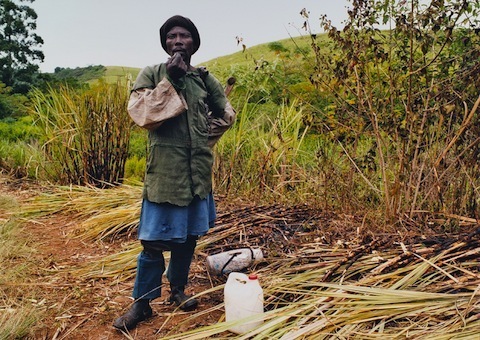The Samurais of Sugar

One of the main keys to writing a non-fiction book is resisting the urge to go off on non-essential research tangents. Nothing breaks your rhythm like spending a needless 25 minutes delving into the world of, say, Soviet helicopter design when you really should be focusing on character development.
It is to my great discredit, then, that I spent too much of yesterday reading up on the hazards faced by sugar cane harvesters—there is a very minor detail in my book about this dreadful line of work, which I used as an excuse to procrastinate instead of tackling a tricky section transition. On the plus side, the tangent did introduce me to the excellent "Sugar Cane" series by South African photographer Zwelethu Mthethwa, who explains here how he approached his reluctant subjects in the fields outside Durban:
My first attraction to the sugar cane workers was that they were wearing skirts, and that they looked to me like Samurai worriers. I then found out that, not only were they wearing skirts, but also many other layers of clothing. This was odd to me because Durban is an incredibly hot and humid area. I thought they must be crazy to be wearing so many clothes and still doing manual labour. I discovered, through speaking with them, that the reason was to protect themselves from the burning ground and soot (sugar cane is burnt before harvested); from the very sharp leaves of the cane; and also from the many snakes that like to live in sugar cane fields. The most difficult part of taking these photographs was stopping them from working. These guys are paid according to the weight of sugar cane that they harvest; there is no hourly rate. I felt guilty that I was interrupting and taking their money away from them by asking them to pose for me. So this forced me to move in and out as quickly as possible, interrupting their flow of production as little as possible.
When I read something like that, it makes me feel ashamed to prattle on and on about how writing requires such intense focus.




